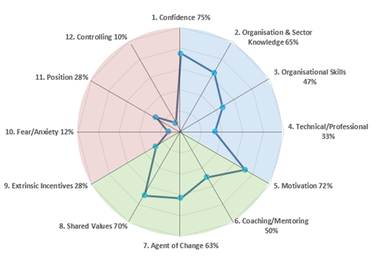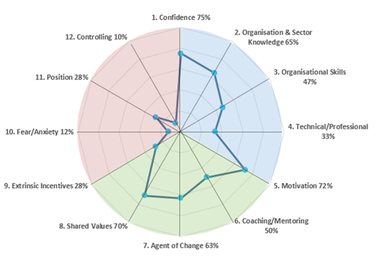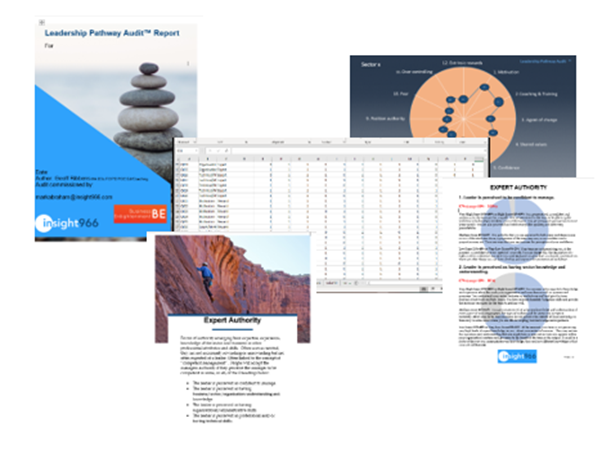BE different
Leadership
Leadership Website 24
Business Enlightenment and our sister company Insight966 have a new and unique approach to leadership; its focus is specifically the leadership of teams. For more information go to www.insight966.com.
This new approach is called Emergent Team Leadership (ETL). It is described in the following book.
“Team Leadership: How to Define, Apply, and Measure it”
Authors: Ribbens G, Abraham A, & Cumming A
Publisher: Taylor and Francis (a Routledge book)
Publication date: 30th Dec 2024
(For organisations interested in bulk purchases of the book, 30% to 45% price reductions are available.)
Emergent Team Leadership (ETL) looks at team leadership from the point of view of team members. It is ‘team-centric’ not the discredited ‘leader centric’ approach. The approach has a profound and positive contribution to all leadership training, coaching and team leader performance reviews.
Why Teams.
All organisations function through teams. The small company is a team led by the managing director, in larger organisations there are teams on the shop floor and there are executive teams, and very large organisations have a whole hierarchy of teams.
The relationship between team members and their team leader is fundamental to team performance, as well as team and leader wellbeing. It is this relationship that ETL measures. ETL measures the degree to which team members willingly and enthusiastically accept their leader. This approach is much more in-depth, powerful and relevant than any other leadership assessment system -according to the team leaders who have used ETL.
ETL uses a diagnostic instrument called the Leadership Pathway Audit™ (LPA). The LPA creates a profile, based on team member perceptions, that indicates to team leaders what they need to do to move from merely managing a team to the true leadership of that team.
ETL and the LPA meet all SMART objectives. Objectives that are specific, measurable, achievable, relevant and time bound.
The diagnostic instrument, the LPA, is based on the team members perception of their team leader. Their assessment is based on the degree to which team members ‘willingly and enthusiastically accept their team leader’, indeed this is our definition of leadership. If team members do not willingly and enthusiastically accept their leader, then this is not yet team leadership.
There are three broad reasons why team leaders accept their team leader. The most obvious one we refer to as 1. transactional. This is the influence or formal authority given to the team leader by the organisation, for example job title or rank. The second one is perceived credibility or expertise that the leader has in the eyes of team members. We call this 2. expert influence: the team leader is perceived to know what they are doing and where they are going. Finally, team members will willingly and enthusiastically accept their leader if the team members ae gaining 3. social and emotional rewards when working with their leader. When team members gain social and emotional rewards when interacting with their team leader the team leader’s influential is enhanced. In the LPA report, described below, we identify 4 typical forms of transactional influence, 4 typical forms of expert influence and 4 typical forms of reward influence.
The Leadership Pathway Audit diagnostic instrument can be obtained from www.insight966.com.
Application
Coaching.
The resulting LPA profile, based on 12 easily understood dimensions, is ideal for team leadership coaching. In fact, all feedback should be based on a coaching style. The LPA profile identifies a multitude of areas that the coach and team leader can explore. Once the team leader understands their team members perceptions then the team leader is highly motivated to improve his or her relationship with their team. Any one-to-one coaching can take place over time, both face to face and online.
Because team leadership is now measurable the results of the coaching process can be tested. Both the coach and the team leader are aware of this.
Training. Usually several team leaders in a workshop.
In our experience, and the experience of team leaders we have come across, leadership training has been disappointing and very often any benefits are short lived. There are many reasons for this but often the training has concentrated on what the team leader needs to achieve not how to achieve those outcomes and objectives through the team. ETL and the LPA concentrates on what the team leader needs to do, the pathway they need to take, to encourage the team to support them and work with them. In such a situation the team and team leader are more able to deliver what the organisation requires.
As with coaching, the effects of any training can be measured, to what degree has the relationship between the team and their leader improved a month or two after the training?
Team Leader Performance Reviews.
In simple terms the LPA report, derived from team members perceptions, is a highly focused appraisal by the team of their team leader. As with coaching and training the team leader is motivated to have an LPA report that enables them to build on their perceived strengths and deal with team members perceptions that, in terms of leadership, need improvement. As we have suggested the manager, who is the reviewer or appraiser, needs to be trained or coached in how to give feedback based on the LPA report.
The team leader is motivated to improve their relationship with their team for many obvious reasons, a critical one is that how the team perceives them can be measured.
Diversity, Equity and Inclusion.
The LPA is a diagnostic instrument that is based on team members perceptions. The LPA results are anonymous but issues to do with diversity, equity and inclusion can be identified. It is important to stress that the team leader may well be unaware of such issues. In such cases the trainer, coach or appraiser can explore such issues with the team leader.
Culture Change.
In many organisations there is a temptation for team leaders to mirror the way they are led. If there is a team leadership culture based on emergent team leadership, where team members willingly and enthusiastically accept their leader, then this can have positive outcomes for the whole organisation. If there is poor relationship between the team and the team leader and such a relationship is mirrored, then this, by definition, will have negative outcomes for the team, the team leader and the whole organisation.
Examples of an LPA Report


18 page report and 600 data points

Our Solution
Products
- Compelling, fascinating and powerful presentation and interactive session
- The Leadership Pathway Audit™
- Individual coaching based on the leader and teams’ profile
- Training and development courses linked to your reality
Features and Benefits
- Creates the link between the leader and productivity, staff retention, absence, staff survey results, stress and anxiety
- Defines a bespoke profile for every leader rather than forcing them into existing groups of personality type
- A key role and inclusion in leadership for team members
- Not a static view of a leader – the attributes change over time and role changes
- Not seeking idealistic leaders
- Non-judgemental
- Flexible and adaptable; leaders and teams measure themselves over time
- Creates the pathway from leaders developing themselves to getting the team to succeed
- The basis for life-long learning and development
Benefits for Individual Leaders
- A leader can have a regular audit and measure change and improvement over time and role changes
- The leadership profile is all about reality and what you can change not personality
- Not looking for good and bad but what actually exists
- 600 plus data points for each leader
- Science and evidence, not a vague concept or management discussion
- Defines what the team are looking for in a leader
- Defines future development needs for individuals rather than generic “leadership training”
- A product that can be continually referred to; the leader has a report and data on themselves and their team
Benefits for Organisations
- Defines future development needs for teams and organisations
- An organisation can measure corporate and cultural change over any period of time
- An evolving view of reality that organisations need and want to understand
- Non-intrusive, confidential and measures changes in leadership caused by organisational and market change
- It delivers big data across an organisation
- Analytics look at the reality of leadership by level, role, age, characteristic, specialisation or any other comparison
A New Approach
The Institute for Leadership and Management is featuring our work this year and planning a roundtable event for industry
“….the potential to move the dial…”
- “More useful than other leadership assessment tools I have completed”
- “I have adjusted some of my behaviour as a consequence.”
- “I found it a particularly useful process which gave me insight into how and where I and the team can focus effort.”
- “Much more sophisticated that I expected”
- “What was useful was it was objective and not just comments from the team”
- “Made me realise one size of leadership doesn’t fit all”
- “Much more about the team and the leader’s ability to adapt”
A New Approach for Mental Health
Many of the factors that cause stress and anxiety at work are the result of decisions made by leaders. Often team members/employees who are stressed by their leader are given time for counselling because HR or line management don't realise the stress is caused by the leader. Often the leader has no idea about the effect they are having as it is not intentional. The team member goes for counselling which makes them feel a bit better then returns to work only for it to happen again.
Traditional leadership assessments and 360 reports concentrate on the idealistic and assumed leadership qualities, the Leadership Pathway Audit™ actually measures the anxiety perception in each team member which is much more useful and leads to decisions to change anxiety-inducing leadership behaviour.
Benefits for Coaches and Trainers
- The Leadership Pathway Audit ™ can be delivered to any leader at flexible and attractive price; the value far exceeds the cost
- Coaches, trainers and HR professionals can utilise the Leadership Pathway Audit ™ at a set cost and increase their revenue by using it as part of their product portfolio at variable cost
- Leaders will reduce the stress of uncertainty about their leadership and how their team is responding
- Team members will have a say in how they wish to be led and treated without the requirement to personally articulate issues to leaders and managers.
- Factors that could lead to stress, anxiety and other mental health outcomes will be resolved in realistic and non-judgemental ways